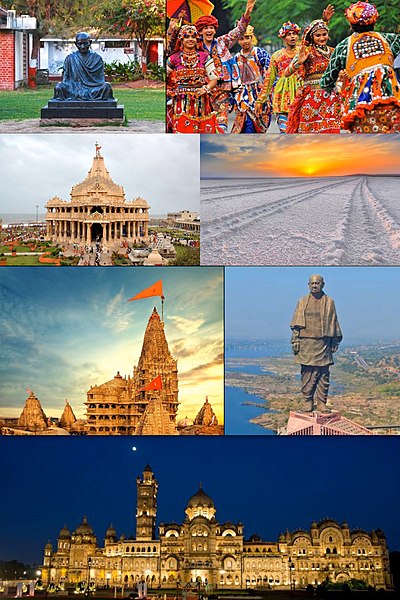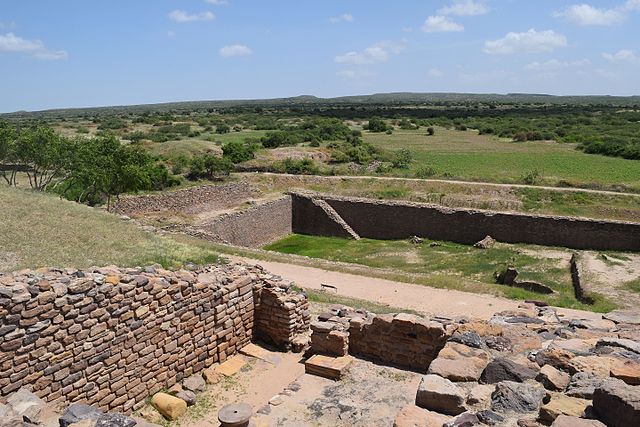The Maitraka dynasty ruled western India from approximately 475 to approximately 776 CE from their capital at Vallabhi. With the sole exception of Dharapaṭṭa, who followed the Mithraic mysteries, they were followers of Shaivism. Their origin is uncertain but they were probably Chandravanshi Kshatriyas.
Maitraka dynasty
Coinage of Bhaṭārka (Maitrakas of Valabhi). Obverse: Head of the kings facing right. Reverse: Trishula trident (symbol of Shiva) with legend in the Brahmi script: Rájño Mahákshatrapasa Bhatárakasa Mahesara–Śrí Bhaṭṭárakasa "Of the illustrious, the Shaivaite, Bhattaraka, the great king; the great Kshtrapa; the Lord and devotee of Maheshwara."
Coinage of Dharasena (Maitraka, 570–606 CE, Gujarat), on the model of the Western Satraps. National Museum, New Delhi.
Eran stone pillar inscription.
Gujarat is a state along the western coast of India. Its coastline of about 1,600 km (990 mi) is the longest in the country, most of which lies on the Kathiawar peninsula. Gujarat is the fifth-largest Indian state by area, covering some 196,024 km2 (75,685 sq mi); and the ninth-most populous state, with a population of 60.4 million in 2011. It is bordered by Rajasthan to the northeast, Dadra and Nagar Haveli and Daman and Diu to the south, Maharashtra to the southeast, Madhya Pradesh to the east, and the Arabian Sea and the Pakistani province of Sindh to the west. Gujarat's capital city is Gandhinagar, while its largest city is Ahmedabad. The Gujaratis are indigenous to the state and their language, Gujarati, is the state's official language.
From top and L-R: Sabarmati Ashram, Gujarati attire, Somnath Temple, Rann of Kutch, Dwarkadhish Temple, Statue of Unity, Laxmi Vilas Palace at Vadodara
Dholavira, one of the largest cities of Indus Valley civilisation, with stepwell steps to reach the water level in artificially constructed reservoirs
Archaeological remains of washroom drainage system at Lothal
Coin of the Gujuras of Sindh, Chavda dynasty, c. 570–712 CE. Crowned Sasanian-style bust right / Fire altar with ribbons and attendants; star and crescent flanking flames.








